Discover the best of Sikkim in 9 days — from Gangtok to Lachung, Ravangla and Pelling. Snow peaks, monasteries, lakes & adventure await!
Tucked away in India’s northeastern corner, Sikkim feels like a dream carved between clouds and snow-capped peaks. It’s a state where the rhythm of prayer flags flutters in the wind, where every sunrise paints the Himalayas in shades of gold, and where nature and spirituality meet at every turn.
In just 9 days, you can experience everything Sikkim has to offer — from the bustling charm of Gangtok to the untouched beauty of North Sikkim, the peace of Ravangla, and the old-world charm of Pelling. This itinerary is perfect for travelers who want a mix of adventure, culture, and calm — with scenic drives, warm locals, and views that will stay etched in your memory.
So pack your winter jacket, charge your camera, and get ready to discover the best of Sikkim — India’s hidden Himalayan jewel.
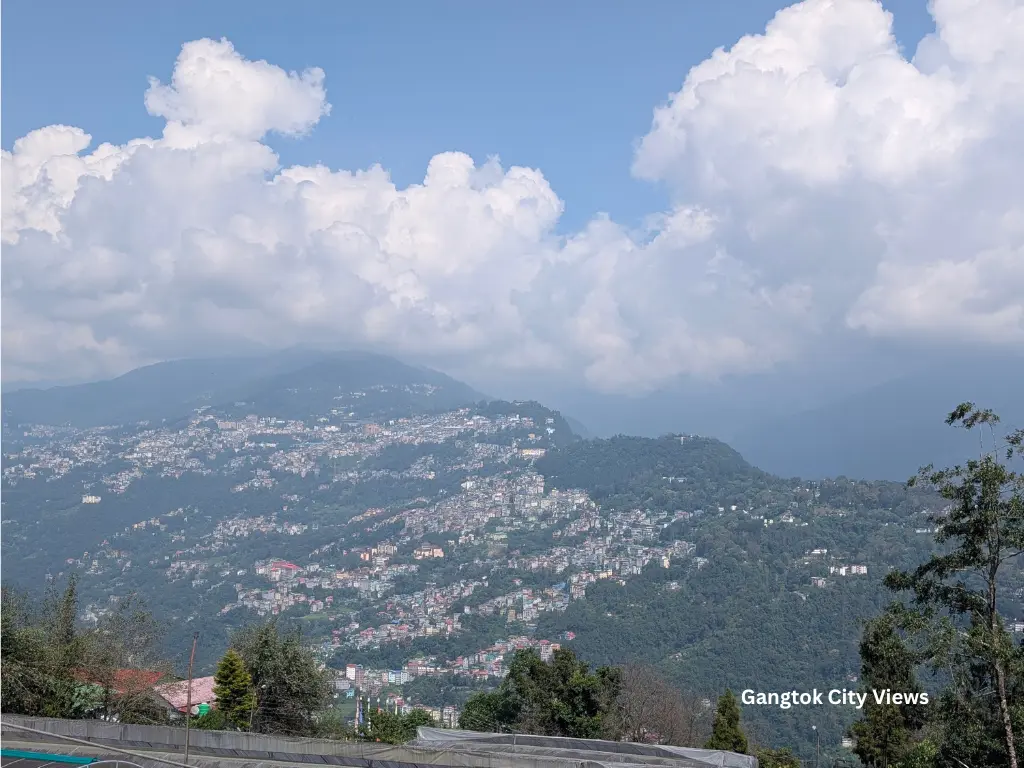
✈️ How to Reach Sikkim
Sikkim doesn’t have a major commercial airport of its own (except the small Pakyong Airport, which has limited flights), so most travelers reach via Bagdogra Airport (West Bengal) or New Jalpaiguri Railway Station (NJP). Try to take an early morning flight; If you are lucky then you may get to see the Kanchenganga views from the airplane itself.
🛫 By Air
- Nearest Airport: Bagdogra Airport (IXB) – around 125 km from Gangtok (4–5 hours drive).
- Taxis and shared cabs are available right outside the airport. You can also pre-book a private cab for ₹3,500–₹4,500 to Gangtok.
- Pakyong Airport (35 km from Gangtok) has limited flights from cities like Delhi and Kolkata, but schedules are often weather-dependent.
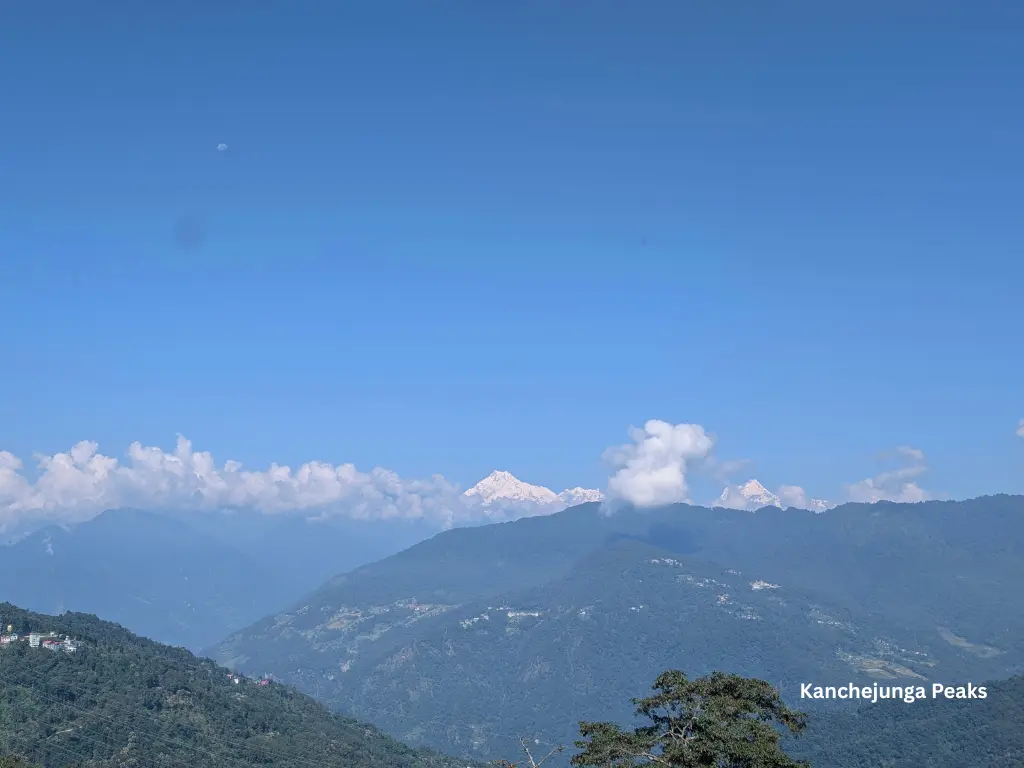
🚆 By Train
- Nearest Railway Station: New Jalpaiguri (NJP) – about 120 km / 4–5 hours from Gangtok.
- Well-connected to Kolkata, Delhi, and Guwahati.
- From NJP, hire a private cab or take a shared jeep to Gangtok.
🚗 By Road
- If you love scenic drives, the route from Siliguri to Gangtok via Teesta River is incredibly picturesque.
- Roads are mostly good except in the rainy season, though winding — keep motion-sickness meds handy!
💡 Tip: The Sikkim Tourism Department runs helicopter services (Bagdogra–Gangtok) — a great option for those short on time.
🪪 Permits & Travel Essentials for Sikkim
Sikkim is a restricted border state, and permits are mandatory for certain regions, especially North and East Sikkim. Here’s what you need to know:
🔹 Inner Line Permit (ILP)
- Required for all foreign nationals to enter Sikkim (Indians don’t need it).
- Available free of cost at check posts in Rangpo or Melli, or you can apply online at sikkimtourism.gov.in.
- Carry 2 passport-size photos and a valid passport/visa copy.
🔹 Protected Area Permits (PAP)
- Needed for visiting North Sikkim (Lachung, Lachen, Yumthang, Zero Point) and East Sikkim (Tsomgo Lake, Baba Mandir, Nathula Pass).
- Issued only to Indian citizens and must be obtained through registered tour operators in Gangtok.
- Foreigners can visit Tsomgo Lake but not Nathula Pass or North Sikkim.
💰 Permit Costs
- Usually included in your package if booked through a local agent.
- Standalone processing costs around ₹200–₹300 per person.
📄 Documents Required
- Passport or voter ID (Aadhar not accepted for permits).
- 2 passport-size photographs.
- Hotel booking proof (sometimes required).
⚠️ Important Tips
- Nathula Pass remains closed on Mondays, and may shut during snowfall.
- Children below 5 years and elderly travelers are not advised to visit Zero Point or Nathula due to high altitude.
- Always carry a copy of your ID and a few passport photos while traveling within Sikkim.
🏞️ Days 1–2: Discovering Gangtok — The Heart of Sikkim
Day 1: Arrival in Gangtok — First Impressions & MG Marg Evenings
Welcome to Gangtok — Sikkim’s capital that blends modern cafés with mountain calm. The drive from Bagdogra Airport or NJP Station takes about 4–5 hours, winding through the Teesta River valley. It’s scenic, but plan to reach before dark.
Once you’ve checked into your hotel, head straight to MG Marg, the pedestrian-only heart of the city. It’s lined with cafés, local shops, and colorful prayer flags fluttering overhead. Grab a coffee at The Coffee Shop or Baker’s Café, and soak in the cool mountain air.
If you have time, walk up to the Enchey Monastery, one of the oldest monasteries in Gangtok, offering peaceful vibes and views of Kanchenjunga on clear days.

Where to Stay:
Stay near MG Marg for convenience — hotels like Summit Namnang Courtyard & Spa, Lemon Tree, or Muscatel Grand Silk Route are great mid-range options (₹4,000–₹8,000).
We stayed in Summit Namnang Courtyard & Spa; the rooms, the staff were good. The views were amazing; however the best part was the accessibility from MG Road. Only the breakfast was a bit disappointing.
Travel Tip: Evenings get chilly, so carry a light jacket. MG Marg is plastic-free — no littering or smoking allowed.
Day 2: Exploring the Sights of Gangtok
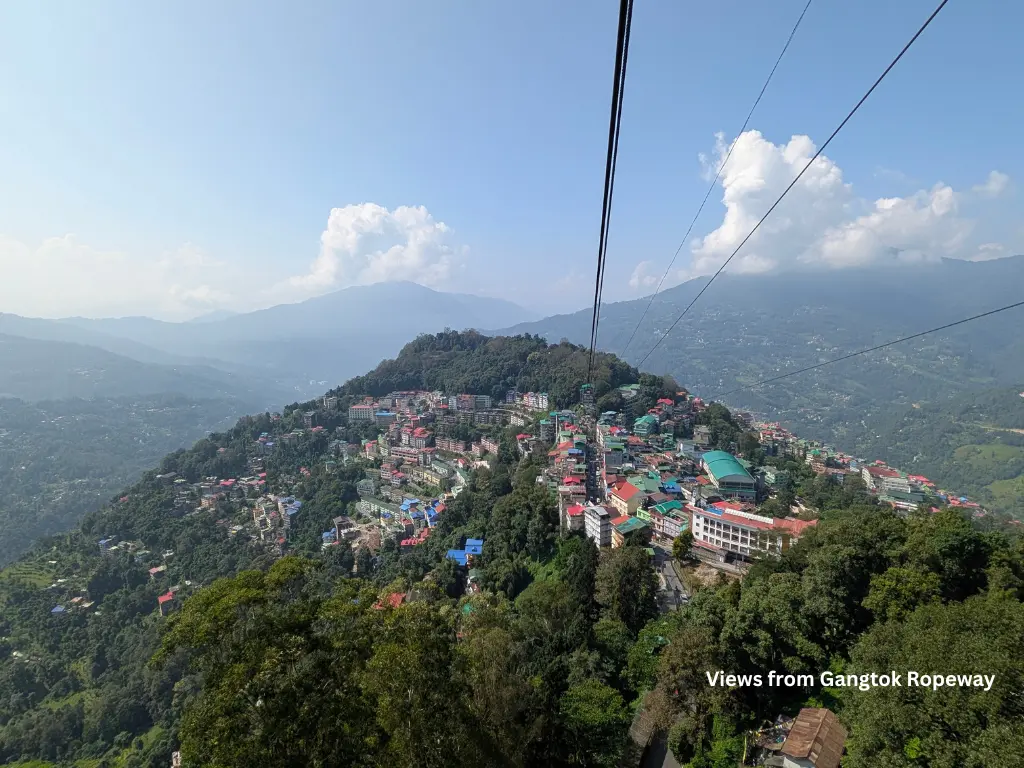
After breakfast, start your day with the city’s top attractions —
- Hanuman Tok: Perched high above Gangtok, this temple offers panoramic views of the Kanchenjunga range. Mornings are best for photography.
- Ganesh Tok: Just a few minutes away, this smaller viewpoint gives another sweeping look over Gangtok.
- Banjhakri Falls: A lush, landscaped park with gushing waterfalls — perfect for nature lovers. You can also wear a traditional Sikkimese attire and click pictures behind the backdrop of the falls.
- Gangtok Ropeway: Offers a thrilling aerial view of the city — a must-do for first-time visitors.
- Do Drul Chorten Stupa and The Namgyal Institute of Tibetology: It’s beautiful and you get to know about the lives of the monks and culture.
- Rumtek Monastery: One of Sikkim’s most important monasteries, home to the Karmapa. The drive is scenic and filled with prayer flags and winding roads. Do visit Shanti view point on the way back as it offers a panoramic view of the Gangtok city.
Wrap up your day with a relaxed dinner at Taste of Tibet or try Tongba, the local drink for that authentic Sikkimese experience. They say every place has its signature dish —for Gangtok, it’s definitely MOMOS!
Trust me, once you taste them here, nothing else will compare.
Entry Fees: (Carry Cash)
- Ropeway: ₹120 per person
- Banjhakri Falls: ₹50 per person
- Rumtek Monastery: ₹20 per person
Pro Tip: Start early; Gangtok traffic builds up after 10 AM.
🏔️ Days 3–5: North Sikkim Adventure — Lachung & the Valley of Flowers
Day 3: Gangtok → Lachung (Approx. 6–7 hours drive | 120 km)
Your North Sikkim journey begins today!
The drive from Gangtok to Lachung is long but absolutely stunning — expect winding mountain roads, roaring waterfalls, and misty valleys along the way. You have to start early as you need to reach the checkpoint before 12 noon or else you may not be permitted to travel ahead.
En route highlights:
- Seven Sisters Waterfall: One of the most scenic stops. Take a short break for photos if time permits.
- Naga Falls: Another dramatic waterfall cascading down rocky cliffs — ideal for a tea stop. Locals also call it Amitabh Bachan Falls due to its immense height.
- Chungthang: The confluence point of the Lachen and Lachung rivers — believed to be blessed by Guru Padmasambhava.
You’ll reach Lachung by evening. This small mountain village sits at around 8,600 ft, surrounded by snow-clad peaks and apple orchards.
Stay: Cozy mountain lodges or homestays such as Apple Valley Inn. Budget stays are also easily available (₹3,000–₹6,000).
We stayed at Mystique Valley which had some incredible views. The service and food was also good.

Tips: Nights can be freezing, even in spring — carry warm layers.
There are limited restaurants or cafes in the Lachung village as it is a remote village, so book all your meals with the hotel where you are staying.
Day 4: Lachung → Yumthang Valley & Zero Point → Return to Lachung
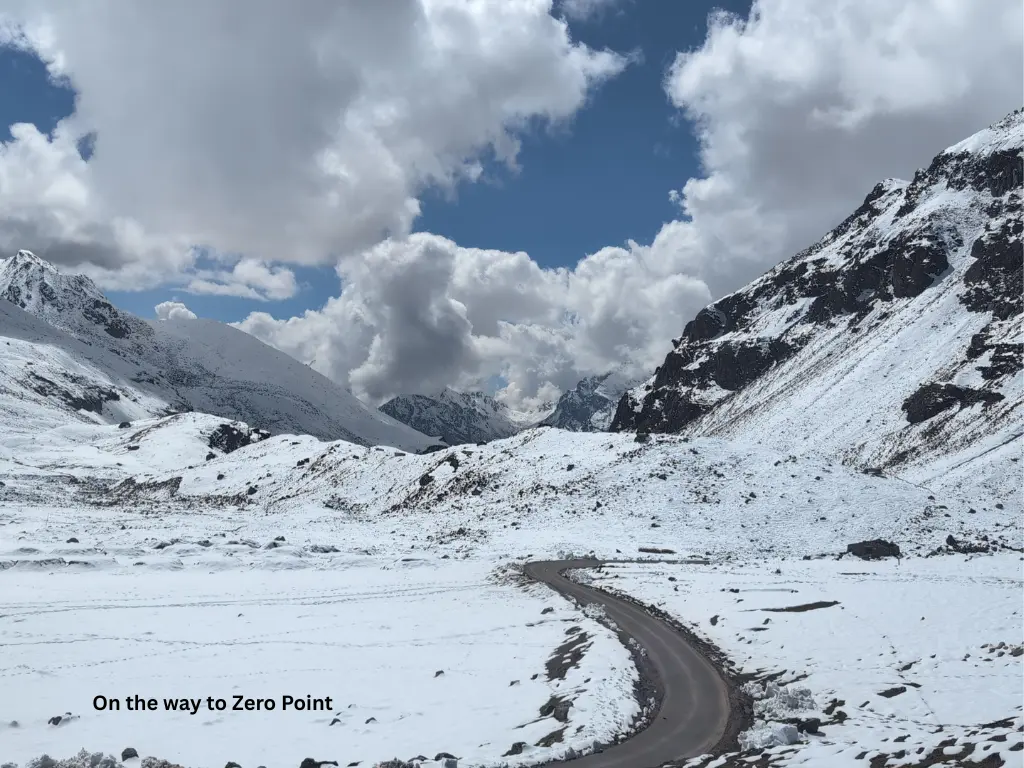
Wake up early (around 6 AM) and drive to the Yumthang Valley, fondly called the Valley of Flowers.
Located at 11,800 ft, it’s a dreamscape of rhododendrons, yaks grazing by rivers, and snow peaks in the background.
In spring (April–June), the entire valley blooms in shades of red, pink, and purple — it’s an unforgettable sight.
If weather permits, continue further to Zero Point (Yumesamdong) — the last motorable point near the China border. Snow is guaranteed here almost year-round, and it’s a favourite for playing in the snow or taking postcard-perfect photos. We went in October and there was fresh snow about 4-5 days ago. Honestly this was the highlight of our trip.
Permits & Costs:
- Inner Line Permit (ILP) required for all Indian visitors.
- Foreign nationals need additional approval from the Ministry of Home Affairs.
- Permit cost: Around ₹200–₹300 per person, usually arranged by your tour operator or hotel.
Entry/Other Costs:
- Zero Point taxi fare: ₹3,500–₹5,000 (shared vehicle) depending on season.
- No restaurants here, only 1-2 tea spots — carry snacks and water!
- Also Zero point is at 15,000 ft, so oxygen levels can drop. Carry camphor to inhale and keep sipping water or liquids.
Return to Lachung by afternoon and spend the evening relaxing by the river or chatting with locals around a bonfire.
Day 5: Lachung → Gangtok (Approx. 6–7 hours)
After breakfast, drive back to Gangtok. The return journey feels different as you see the same landscapes from a new perspective — clouds rolling over valleys, tiny hamlets tucked in folds of green hills, and glimpses of prayer flags fluttering on mountain ridges.
On the way back, you can stop at KabiLongstok and Tashi View Point, just before entering Gangtok — it offers one of the best views of Mt. Kanchenjunga, especially at sunset.
Check back into your Gangtok hotel and rest after your high-altitude adventure.
Stay: We stayed at Denzong Regency at this time in Gangtok offering premium and luxurious accommodations with spectacular views and amazing food. Also, the hotel has a casino where you can try your hand at and have an amazing time.
✨ Travel Tip:
- Carry motion sickness tablets — roads are winding.
- Avoid visiting Zero Point if you have breathing issues; altitude is above 15,000 ft.
- No ATMs or fuel stations beyond Mangan, so stock up early.
🏞️ Days 6–9: East & South Sikkim to Pelling — From Glacial Lakes to Tea Gardens
Day 6: Tsomgo Lake – Baba Mandir – Nathula Pass (East Sikkim Day Trip)
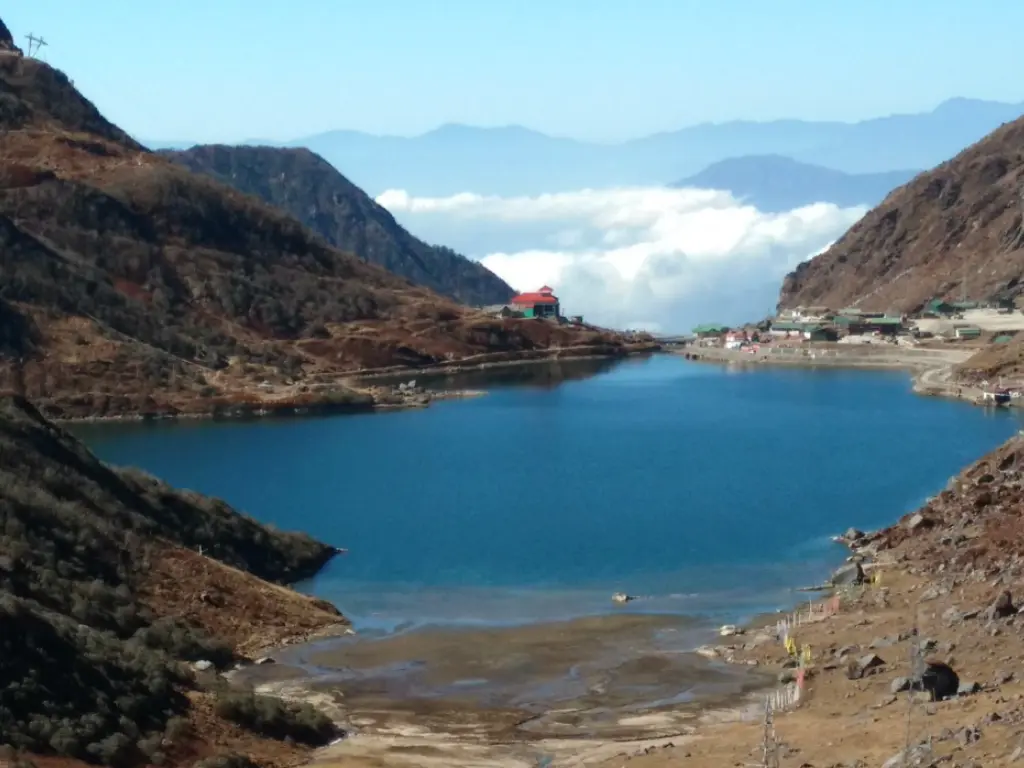
This day takes you to some of Sikkim’s most breathtaking high-altitude gems. Start early from Gangtok (around 7 AM) as permits are checked and the weather changes quickly in the mountains.
Your first stop is Tsomgo Lake (also called Changu Lake) — a glacial lake located at 12,400 ft, surrounded by snow-capped mountains. The water changes colour with the season — a mirror of ice in winter and deep turquoise in summer.
Yaks are often seen by the lake, and you can take a short ride (₹300–₹500) or simply enjoy momos and hot tea sold by locals. There is also a ropeway here and on a clear day, you get to see the breathtaking view of the lake from the top.
A short drive ahead lies the Baba Harbhajan Singh Mandir, dedicated to an Indian soldier revered as a guardian spirit of the border.
It’s a serene place, beautifully maintained, and offers glimpses into Indo-China border folklore.
If you have the right permit and the weather allows, continue to Nathula Pass (14,140 ft) — one of the Indo-China border trade routes.
It’s surreal to see the Chinese border gate and soldiers on both sides. No photo or videography is allowed and your phones or cameras can be confiscated otherwise.
Permits & Entry Info:
- Indian nationals need a Protected Area Permit (PAP), arranged by your travel agent or hotel a day in advance.
- Foreign nationals are not allowed up to Nathula but can visit up to Tsomgo Lake.
- Nathula Pass permit costs approx. ₹5000 per vehicle additional.
Return to Gangtok by evening — tired but thrilled. Enjoy some quiet time or go to a casino for a fun-filled evening.
Day 7: Gangtok → Namchi → Ravangla (South Sikkim Trail)

Say goodbye to Gangtok and start early for Namchi, a 3–4 hour scenic drive through tea gardens and mountain villages.
Namchi, meaning Sky High, is home to the Char Dham Complex, where replicas of India’s four sacred pilgrimage sites stand majestically. The 87-ft Shiva statue here is unmissable. Also visit Samdruptse Monestry which has some beautiful sunset views.
On the way, make a stop at the Temi Tea Garden — the only tea estate in Sikkim and one of India’s most beautiful. You can walk through the plantations, sip freshly brewed tea, and pick up organic tea packets as souvenirs.
From Namchi, continue your journey to Ravangla (2 hrs), a peaceful hill town surrounded by lush forests and misty valleys. Visit the Buddha Park, where a towering golden Buddha statue overlooks the Himalayas — one of the most photogenic spots in South Sikkim.
Stay:
- Buddha Retreat in Ravangla. The stay was decent and food was yummiest.
Day 8: Ravangla → Pelling
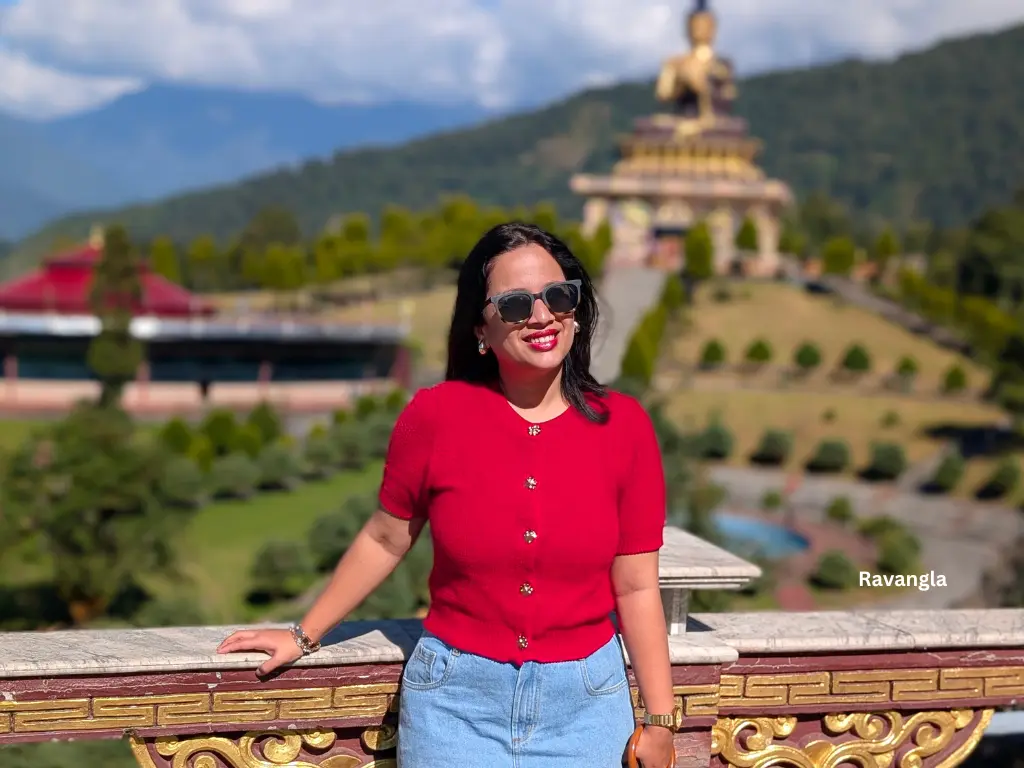
The drive from Ravangla to Pelling takes about 3 hours, winding through forested hills and terraced farmlands.
Pelling, at 7,200 ft, is known for its magnificent views of Mt. Kanchenjunga and ancient monasteries.
Start your sightseeing with the Pelling Skywalk, India’s highest glass skywalk, offering a thrilling view of the Chenrezig statue and the valley below.
Continue to the Rabdentse Ruins, once the capital of the former Sikkim kingdom. The ruins are surrounded by forests and framed by the Himalayas — perfect for a serene walk.
Visit Pemayangtse Monastery, one of the oldest in Sikkim, known for its intricate wooden sculptures and calm atmosphere.
Later, head to Khecheopalri Lake, considered sacred by both Buddhists and Hindus — legend says not a leaf ever floats on its surface.
Stay:
- Magpie The Chestnut Retreat
Tip: Pelling gets chilly after sunset — carry layers even in summer.
Day 9: Pelling → NJP/Bagdogra Departure
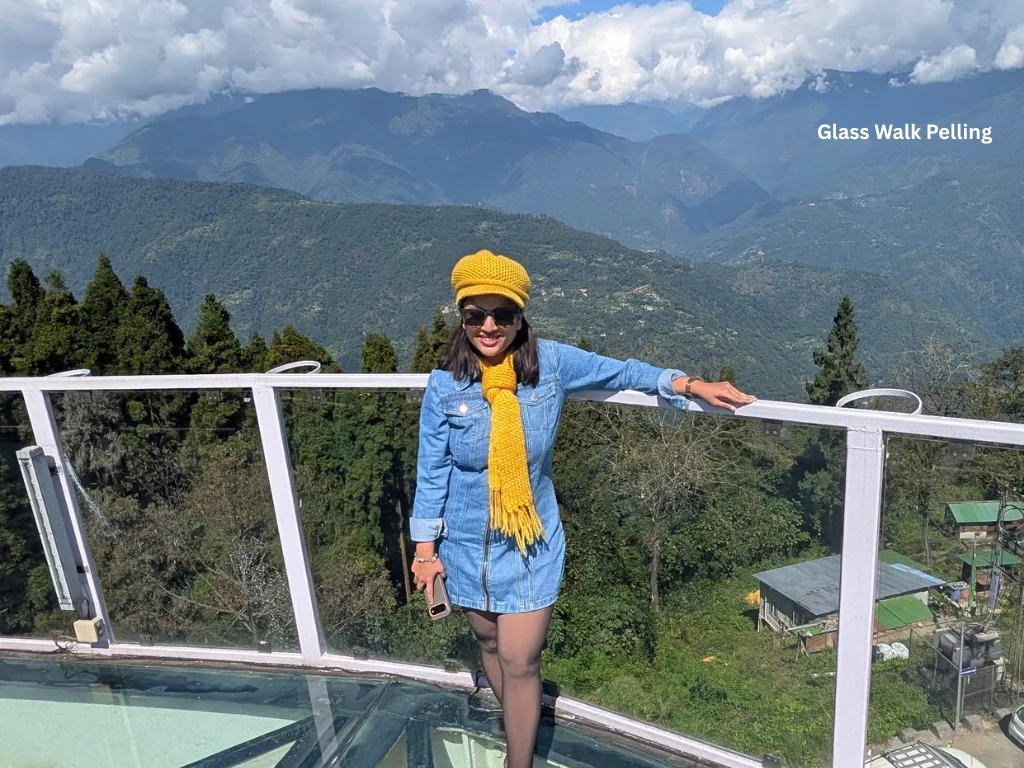
After breakfast, begin your return journey to NJP railway station or Bagdogra airport (approx. 5–6 hours).
You’ll leave Sikkim with a heart full of mountain memories — monasteries echoing with chants, clouds brushing over valleys, and the warm smiles of locals.
🚗 Travel Partner Review (Non-Sponsored)
Our trip was beautifully arranged by Galaxy Tours & Travels including the permits.
The experience was smooth, comfortable, and well-timed.
- Owner: Tenzing — extremely professional and responsive. Contact Number – 9832044536
- Driver: Sukhbir — polite, punctual, and very knowledgeable about the routes.
If you’re planning a similar tour, you can reach out to them directly — highly recommended (and this is totally non-sponsored, just a genuine shout-out 😊).
🪪 Permit Summary for Sikkim Travel:
| Area | Permit Type | Who Needs It | Where to Get It | Cost |
| Nathula, Tsomgo, Baba Mandir | Protected Area Permit (PAP) | Indians | Apply via tour operator or hotel in Gangtok | ₹250–₹300 |
| Lachung, Yumthang | Inner Line Permit (ILP) | Indians | Mangan or via hotel | ₹200–₹300 |
| North Sikkim / Nathula (Foreigners) | Restricted Area Permit (RAP) | Foreigners | Ministry of Home Affairs (Delhi) | As per govt. rules |
Documents Required:
- 2 passport-size photos
- Valid ID (Passport, Voter ID, Aadhaar for Indians)
- Passport & Visa for foreigners
Tip: Always carry multiple photocopies — checkpoints may ask for them en route.
If you’ve ever dreamt of waking up to snow-capped peaks, sipping tea amidst clouds, and wandering through peaceful monasteries — Sikkim is your calling.
Nestled in the lap of the Himalayas, this tiny state packs in everything — adventure, calm, spirituality, and postcard-perfect views at every turn.
Whether it’s the colorful prayer flags fluttering in Gangtok, the frozen beauty of Tsomgo Lake, or the breathtaking drive to Yumthang Valley — every day in Sikkim feels like a story unfolding in slow motion.
In this 9-day Sikkim itinerary, you’ll cover the best of North, East, and South Sikkim — from the lively MG Marg in Gangtok to the serene monasteries of Pelling. Perfect for first-time travelers, couples, or families who want to experience the real charm of the Himalayas without rushing through it.
So pack your woollens and get ready — your Sikkim journey starts here! 🏔️✨

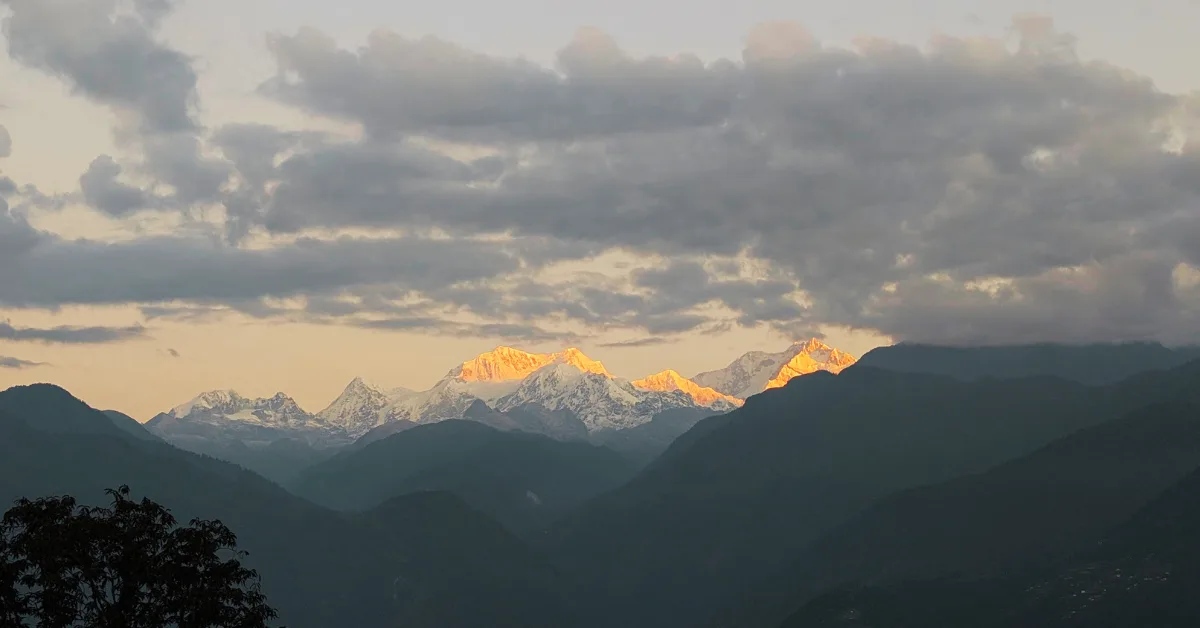
Leave a reply